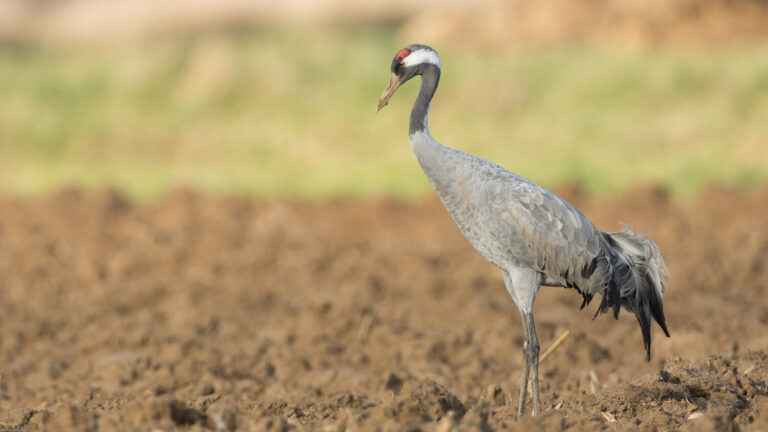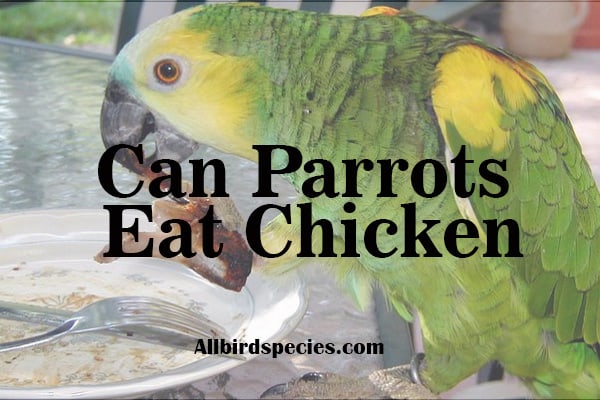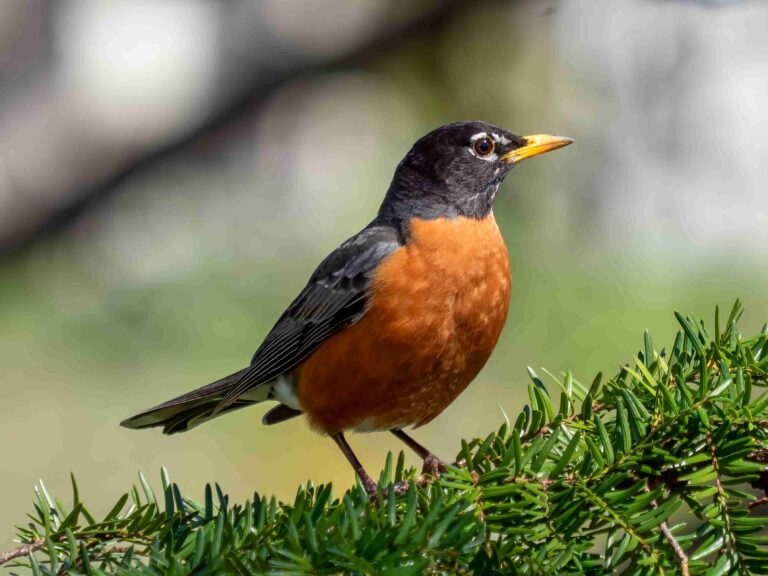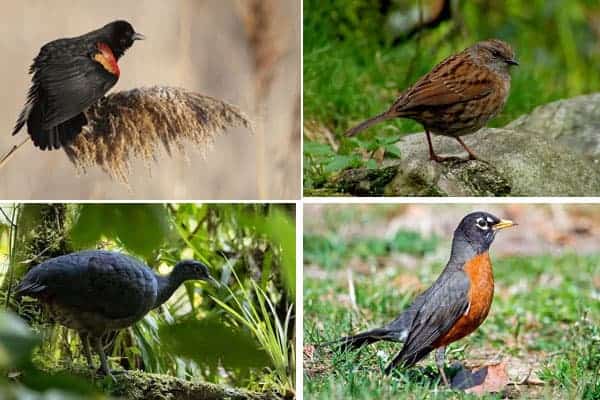11 Small Birds With Long Necks (With Pictures)
Did you know birds with long necks are key in their ecosystems? Some have up to 25 cervical vertebrae. This helps them see faraway predators and find food in wetlands, marshes, and coasts.
This article will look at 12 small birds with long necks. You’ll learn about their special features, how they eat, and where to see them. From the elegant Great Egret to the vibrant Little Blue Heron, these birds are a wonder to birdwatchers and anyone who loves nature.
Introduction to Small Birds with Long Necks
Small birds with long necks are fascinating to bird lovers and casual watchers. They are key players in their ecosystems, and their unique shapes and behaviors make them interesting to study.
Their long necks help them find food on land and in water. These birds are smaller than a sparrow. They live in forests, parks, and even backyards.
Some birds, like Black-capped Chickadees, are known for their acrobatics and flocking. They search for seeds in plants and bird feeders. They are quick and energetic when grabbing food.
These birds have striking colors and patterns. Chickadees have a black-and-white head and soft gray bodies. They are beautiful and important for their habitats.
| Species | Size Comparison | Habitat | Nesting Behavior |
|---|---|---|---|
| Black-capped Chickadee | Smaller than a sparrow | Forests, parks, residential areas | Cavity excavation in trees or boxes |
| Great Egret | Smaller than Great Blue Heron | Aquatic habitats, wetlands | Nests in mixed-species colonies |
| American Great Egret | Similar to other Great Egrets | North and South America | Nests in colonies, exhibits courtship displays |
Why Do Some Birds Have Long Necks?
Birds’ long necks are key to survival and food finding. They help birds spot predators and prey from far away, which is very helpful in open places like wetlands and savannas.
Understanding these adaptations shows how birds have thrived in different places.
Adaptations for Survival
Long-necked birds, like the great blue heron, have flexible necks. This lets them strike prey quickly and efficiently. For example, the green heron can stretch its neck to find food or watch for dangers.
When it’s not hunting, the green heron can pull its neck back, making it harder for predators to see.
Feeding Habits and Techniques
Long-necked birds have special ways to eat. Wading birds dive deep to catch fish. Flamingos use their long necks to filter food from mud and water.
Each bird’s eating habits vary depending on where it lives. This shows how important neck length is for finding food.
1. Ostrich
- cientific Name: Struthio camelus
- Size: Up to 2.5–3 m (8.2–9.8 ft) tall
- Weight: 63–145 kg (139–320 lb)
- Lifespan: Up to 40–45 years in the wild
- Diet: Primarily herbivorous, feeding on seeds, leaves,
The ostrich, known as Struthio camelus, is the tallest bird in the world. It can grow between 6.9 and 9 feet tall. This height helps them watch for predators like lions and cheetahs in their home, the savannas and deserts of Africa.

Adult female ostriches are 5.7 to 6.2 feet tall. Males can weigh between 220 to 287 pounds.
These birds have the largest eyes of any land animal, nearly 2 inches in diameter. They can run over 70 km/h, making them very fast. In their social groups, the alpha male dances to attract females during mating season.
An ostrich can lay 7 to 10 eggs at a time. Each egg is about 3 pounds and 15 cm long. The eggs hatch after 42 to 46 days, and chicks grow up in about 18 months.
In the wild, ostriches live for 30 to 40 years. Those in captivity can live up to 70 years. The common ostrich is not threatened, but the Somali ostrich is facing a number decline.
These birds can live in many different places. They eat grasses, seeds, and insects. This shows they are herbivorous omnivores.
| Feature | Details |
|---|---|
| Height | 6.9 to 9 feet (2.1 to 2.7 m) |
| Weight | Up to 320 pounds (145 kg) |
| Speed | Over 70 km/h (43 mph) |
| Eye Diameter | 2 inches (5 cm) |
| Egg Size | 6 inches (15 cm), weighing up to 3 pounds (1.3 kg) |
| Average Lifespan | 30 to 40 years in the wild, up to 70 years in captivity |
| Herd Size | Around 12 individuals |
| Nesting | 7 to 10 eggs per batch, incubated for 42 to 46 days |
2. Emu
- Scientific Name: Dromaius novaehollandiae
- Size: 1.5–2 m (4.9–6.6 ft) tall
- Weight: 18–60 kg (40–132 lb)
- Lifespan: 10–20 years
- Diet: Seeds, fruits, flowers, leaves, and insects.
The emu is a bird known as Dromaius novaehollandiae. It has amazing features that make it stand out. These birds can grow up to 6.6 feet tall and weigh about 120 pounds. They are the second-largest birds in the world.

Emus live in many places, like woodlands and grasslands. They can adapt well to different environments.
Unique Characteristics and Habitat
Emus have long necks and shaggy feathers. These help them fit into different landscapes. They can run fast, almost 30 miles per hour.
They can also travel long distances, up to 15 miles a day. During breeding, they show great curiosity and social behavior. Males take care of the eggs for about 55 to 60 days. They lose weight doing this.
Diet and Foraging Behavior
Emus mainly eat fruits, seeds, and insects. They search for food on the ground. In the wild, they eat many plants.
This flexibility in diet helps them survive in different conditions. They are not considered endangered, with a stable population. But, they face threats like habitat loss and conflicts with farming.
3. Goliath Heron
- Scientific Name: Ardea goliath
- Size: 120–150 cm (47–59 in)
- Weight: 4–5.5 kg (8.8–12.1 lb)
- Lifespan: Up to 15 years in the wild
- Diet: Primarily fish, but also amphibians and small mammals.
The Goliath Heron is a big bird that lives in wetlands. It is the largest heron species, growing up to 5.5 feet tall. Its blue-gray color stands out in its home.
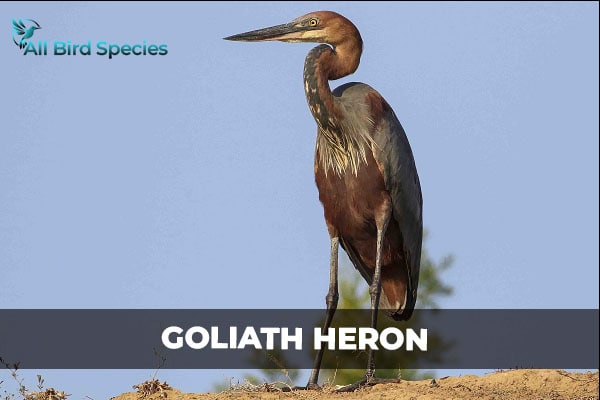
This bird is great at catching fish. It uses its long neck to spot fish from far away. Its diet includes fish, amphibians, and crustaceans, with prey sizes averaging 30 cm.
The Goliath Heron’s bill is 24 cm long, helping it catch food. It can fly up to 7.5 feet wide, making it a big presence in its area.
The Goliath Heron breeds from November to March, during the rainy season. Nesting pairs lay 2 to 5 eggs. The eggs hatch in 24 to 30 days, and the young are fed by regurgitation.
Even though it faces challenges, the Goliath Heron is not in danger. It is classified as Least Concern on the IUCN Red List. This shows its population is stable. The Goliath Heron is a symbol of strength in Africa’s wetlands.
| Characteristic | Measurement |
|---|---|
| Height | 120–152 cm (3 ft 11 in–5 ft 0 in) |
| Wingspan | 185–230 cm (6 ft 1 in–7 ft 7 in) |
| Weight | 4–5 kg (8.8–11.0 lb) |
| Bill Length | 24 cm (9.4 in) |
| Eggs per Season | 2 to 5 |
| Incubation Period | 24 to 30 days |
| Average Lifespan (Wild) | 15 years |
| Conservation Status | Least Concern |
4. Great Egret
- Scientific Name: Ardea alba
- Size: 85–102 cm (33–40 in)
- Weight: 700–1,500 g (1.5–3.3 lb)
- Lifespan: Up to 15 years in the wild
- Diet: Primarily fish, amphibians, and small invertebrates.
The Great Egret, known as Ardea alba, is a stunning bird. It stands about 3.3 to 4.3 feet tall. Its pure white feathers and long neck make it easy to spot.

People love watching Great Egrets glide through wetlands. They show off their beauty and skill.
Habitat and Distribution
Great Egrets live in many wetlands, including those in North America, Europe, and Asia. They adapt well to different environments, such as marshes and rivers.
In the 19th century, they were hunted for their feathers. But now, they are found worldwide. They can be seen from southern Canada to Argentina, Europe, Africa, Asia, and Australia.
During the breeding season, they are even more interesting. They hunt for fish and small animals, and their long necks help them wait for prey.
If you like birdwatching, learning about Great Egrets is rewarding. You’ll see their beauty and how they’ve changed over time. Audubon’s bird paintings show their elegance and grace.
5. Anhinga
- Scientific Name: Anhinga anhinga
- Size: 76–102 cm (30–40 in)
- Weight: 1.2–2.5 kg (2.6–5.5 lb)
- Lifespan: Up to 20 years in the wild
- Diet: Primarily fish, but also eats amphibians and small invertebrates.
The Anhinga, known as the “snake bird,” can grow up to 3.5 feet long. It lives in freshwater places like lakes, rivers, and swamps in the Americas. Its unique way of swimming, with only its neck showing, makes it stand out.
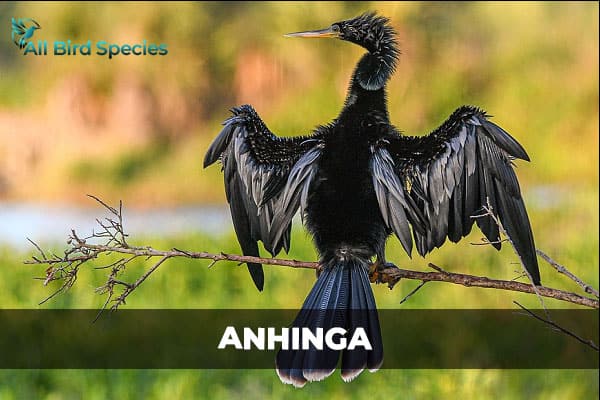
Look at the Anhinga’s striking colors. Adult males are black with silver or white streaks. Females and young birds have a pale head and dark belly. These differences help identify them easily.
Anhingas build nests in trees over water. Their nests are made of sticks and hold 3 to 5 eggs. They like to nest in groups near water, showing they are social.
They dry their wings by spreading them out in the sun because they don’t have oil glands like other waterbirds. This helps them swim better, but they need to dry their wings often.
Anhingas are great swimmers and hunters. They eat small fish, amphibians, and crustaceans. You can see them diving underwater, using their long neck and sharp bills to catch prey.
Anhingas can also be seen flying high in the sky. They live in shallow waters in the Southeastern and south central United States, Mexico, and parts of Central and South America.
| Characteristic | Details |
|---|---|
| Length | 2.5 to 3.5 feet |
| Coloration (Male) | Black with silvery to white streaks |
| Coloration (Female/Immature) | Pale head/neck/breast with a dark belly |
| Nesting | In trees overhanging water; bulky stick platforms |
| Diet | Primarily small fish, along with amphibians and crustaceans |
| Habitat | Freshwater lakes, rivers, swamps, and coastal areas |
| Social Behavior | Nests in loose groups, often near water |
6. Trumpeter Swan
- Scientific Name: Cygnus buccinator
- Size: 125–165 cm (49–65 in)
- Weight: 8–13.6 kg (18–30 lb)
- Lifespan: Up to 24 years in the wild
- Diet: Aquatic vegetation, including roots, stems
The Trumpeter Swan, known as Cygnus buccinator, is a majestic symbol of North American wildlife. These birds can grow up to 4 to 6 feet long. They have a wingspan of almost 7 feet and weigh over 20 pounds.
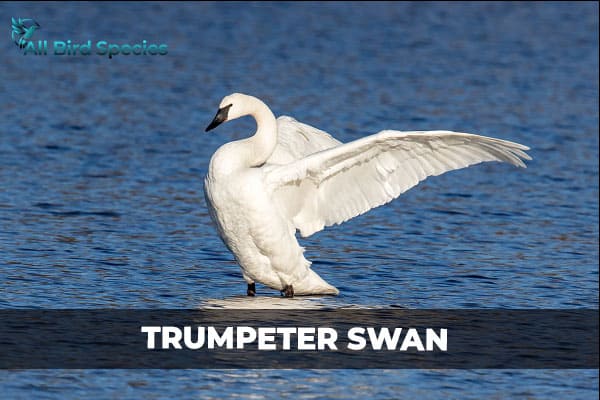
Their striking white plumage and long neck make them a stunning sight. They live in lakes, rivers, and marshes, feeding on aquatic plants.
Social Behavior and Habitat
Trumpeter swans are social birds, often seen in pairs or family groups. Their numbers have grown from 69 in the 1930s to about 63,000 today. They are found mainly in northwestern North America.
Their calls can be heard from up to 2 miles away. This adds to their charm and appeal.
Female Trumpeter Swans lay one egg every other day until they have 3 to 8 eggs. The incubation period is about 34 days. The cygnets can swim as early as one day old and fly by three to four months.
They prefer to breed in areas with lots of vegetation and little human disturbance. This makes them very sensitive to environmental changes.
| Trumpeter Swan Facts | Details |
|---|---|
| Wingspan | Almost 7 feet |
| Weight | Over 20 pounds |
| Population in the U.S. | Estimated over 63,000 |
| Egg Laying | One egg every other day, clutch size 3-8 eggs |
| Incubation Period | About 34 days |
| Cygnets’ Swimming Ability | Can swim when less than a day old |
| Flight Age | Three to four months |
| Distance Calls Can Be Heard | Up to 2 miles away |
7. Sandhill Crane
- Scientific Name: Antigone canadensis
- Size: 80–100 cm (31–39 in)
- Weight: 4.5–7.5 kg (10–16.5 lb)
- Lifespan: Up to 20 years in the wild
- Diet: Seeds, grains, insects, and small animals.
Sandhill Cranes, known as Antigone canadensis, are amazing birds with long necks. They migrate every year. They are about four feet tall and have a wingspan of over six feet.
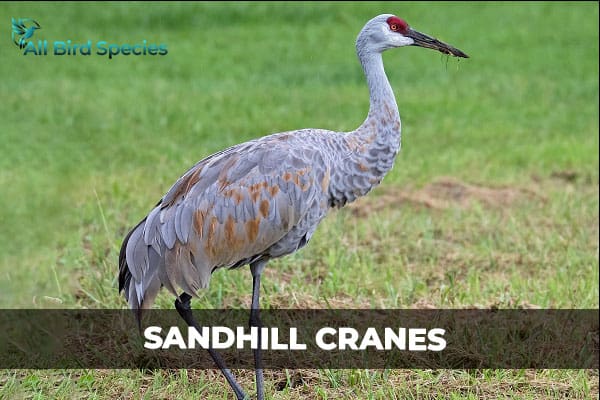
Every year, over 500,000 cranes come to the Platte River in Nebraska. This is a great sight for bird lovers.
These cranes travel about 600 miles from their winter homes. In Nebraska, they eat a lot of corn, which helps them grow strong for their journey.
They eat mostly raw corn, which helps them on their long trip. Their numbers have grown significantly since the 1940s.
Sandhill Cranes mate for life and live in groups. Sometimes, they fight over food. Since 1984, their numbers in the Rocky Mountains have stayed the same.
This shows that conservation works. In Idaho, over a thousand cranes gather in autumn, thanks to rules like the Migratory Bird Treaty Act of 1918.
In Nebraska, work is done to keep cranes safe. Places like Audubon’s Rowe Sanctuary help. This attracts over 15,000 birdwatchers every spring.
This shows how important it is to protect these amazing birds. We must keep their habitats safe for them and for us to enjoy.
~Small Birds with Long Necks: Highlighting Unique Species~
Discover the charm of unique long-necked birds that grace our wetlands and coastal areas. This section features several fascinating species. Each has distinct characteristics that contribute to their ecological roles.
8. Little Blue Heron
- Scientific Name: Egretta caerulea
- Size: 60–66 cm (24–26 in)
- Weight: 300–600 g (10.6–21.2 oz)
- Lifespan: Up to 15 years in the wild
- Diet: Primarily fish, amphibians, and small invertebrates.
The Little Blue Heron (Egretta caerulea) Birds With Long Necks stands out with its striking blue-gray plumage. This small heron thrives in wetlands. It uses elegant movements to hunt for fish and amphibians.
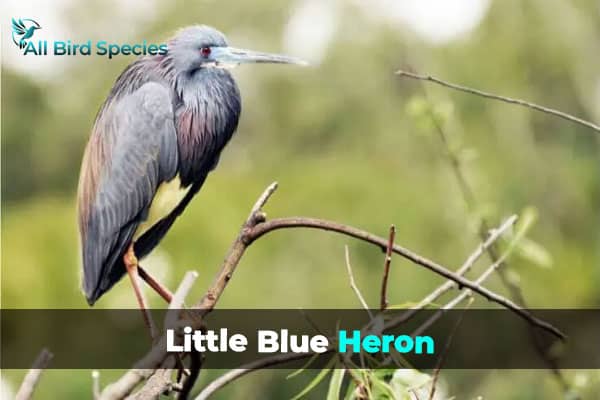
For those seeking detailed Little Blue Heron information, you’ll find their adaptability impressive. They can live in various wetland habitats.
9. White Ibis
- Scientific Name: Eudocimus albus
- Size: 65–75 cm (25–30 in)
- Weight: 1.2–1.9 kg (2.6–4.2 lb)
- Lifespan: Up to 16 years in the wild
- Diet: Primarily insects, crustaceans, and small fish.
The White Ibis (Eudocimus albus) has a long neck and curved bill. It shows a social demeanor, often foraging in groups. These birds are seen along coastal areas and wetlands.
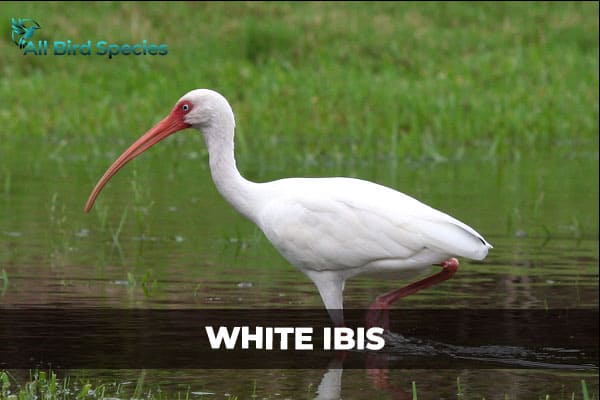
They hunt for crustaceans and insects. Their striking appearance adds to the biodiversity of their environment.
10. Tricolored Heron
- Scientific Name: Egretta tricolor
- Size: 60–70 cm (24–27 in)
- Weight: 400–600 g (14–21 oz)
- Lifespan: Up to 15 years in the wild
- Diet: Primarily fish, amphibians, and small invertebrates.
The Tricolored Heron (Egretta tricolor) features stunning colors and impressive feeding techniques. This medium-sized heron is talented in hunting within shallow waters. It uses patience and swift movements to catch its prey.
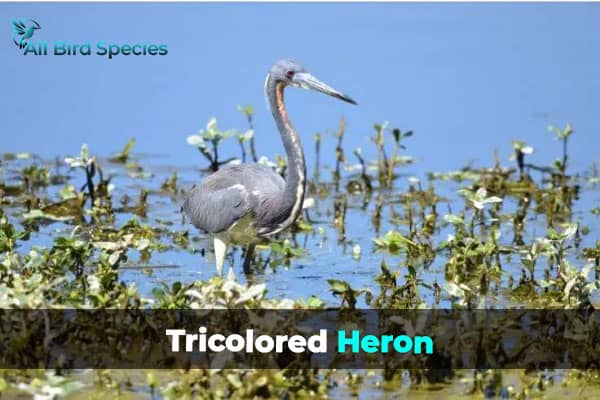
Its presence contributes significantly to the health of wetland ecosystems.
11. Greater Flamingo
- Scientific Name: Phoenicopterus roseus
- Size: 90–150 cm (35–59 in)
- Weight: 2.5–4 kg (5.5–8.8 lb)
- Lifespan: Up to 50 years in the wild
- Diet: Primarily algae, crustaceans, and small invertebrates
Famous for its vibrant pink feathers, the Greater Flamingo (Phoenicopterus ruber) Birds With Long Necks captivates observers. It has a long neck that allows it to filter food from the water. This bird primarily feeds on algae, crustaceans, and small fish.
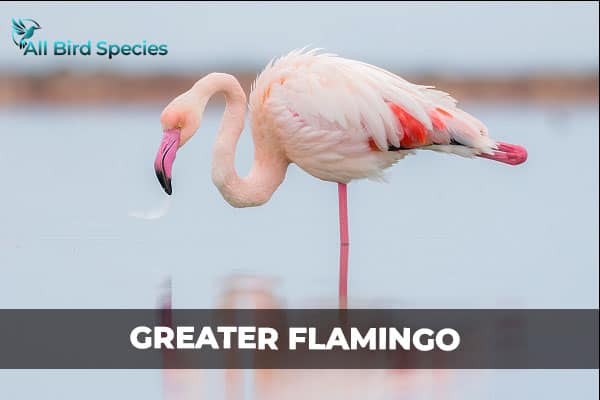
Through their unique feeding habits, they play a vital role in maintaining the ecology of their habitats.
| Bird Species | Scientific Name | Habitat | Diet |
|---|---|---|---|
| Little Blue Heron | Egretta caerulea | Wetlands | Fish, amphibians |
| White Ibis | Eudocimus albus | Coastal areas, wetlands | Crustaceans, insects |
| Tricolored Heron | Egretta tricolor | Shallow waters | Fish, aquatic invertebrates |
| Greater Flamingo | Phoenicopterus ruber | Brackish lakes, lagoons | Algae, crustaceans, small fish |
Read More🐦Related Articles:
- Hummingbirds In Kansas
- Doves (Pigeons) in Kansas
- Kingfisher Bird
- Spiritual Meaning of Dead Birds
- Black and White Birds in Michigan
- Small Green Birds in Florida
Conclusion
Small birds with long necks are truly fascinating. Each species has its own special ways and roles in nature. From the Sword-billed Hummingbird to the Little Spiderhunter, they show us how complex and beautiful the world is.
These birds’ unique ways of eating and living make birdwatching even better. They also remind us why we must protect them—this is key to their survival.
Joining local birdwatching groups helps protect bird homes. Working together, we can make a big difference. Learning about birds’ habits and homes is crucial for enjoying them and helping them thrive.
By supporting the conservation of these birds, we ensure they will be around for future generations. Watching birds like the Great Egret or Loten’s Sunbird is special. Every small action we take helps protect them.



